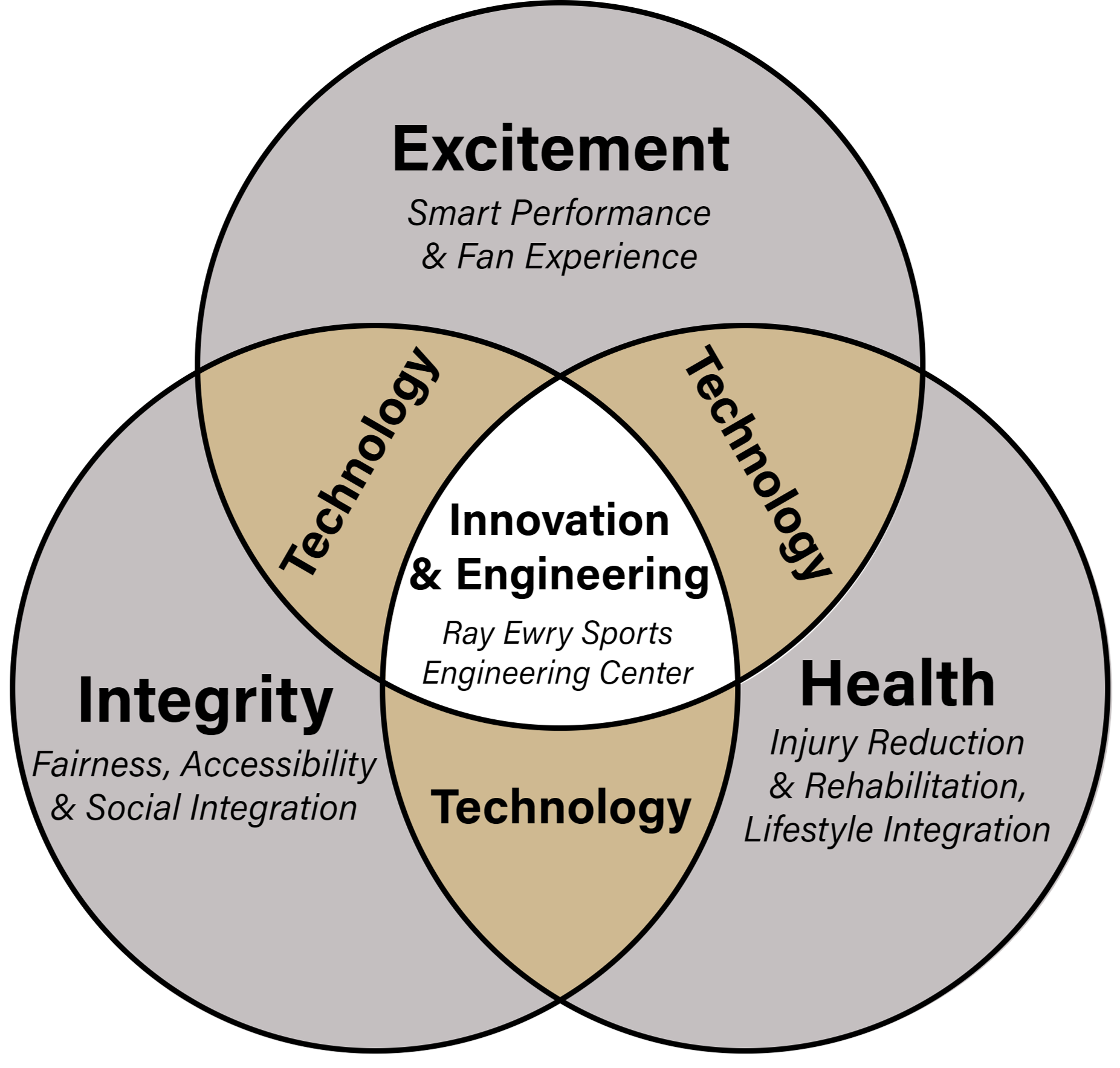The Ray Ewry Sports Engineering Center (RESEC) is named in honor of a record-setting Olympian and College of Engineering graduate, Ray Ewry. As a joint effort between Purdue University College of Engineering and Intercollegiate Athletics, the center reflects Ewry's passion for both sports and engineering and advances research and learning opportunities for athletes and students alike. To accomplish this, RESEC brings together the three elements of a successful university program: Research, Education, and Industry Engagement.
Our Vision
To be a world class, multi-disciplinary organization driven to sustain Excitement, Safety, and Integrity in sports.
Our Mission
To operate a global hub and exchange of knowledge, driven to address the most pressing challenges in sports.
Our Objectives
To provide exceptional research & educational opportunities for students and sports focused organizations to create advancement & innovation in meaningful sporting activities
Our Priorities
At RESEC, we've identified Excitement, Integrity, and Health as our most important priorities within sports and sports engineering. These priorities can be found in every sport, and often conflict. For example, we can make American Football completely safe... by eliminating tackles! But then we sacrifice the excitement of the game, so protective gear is engineered to balance these two priorities. Through the application of engineering principles, RESEC facilitates innovative and ground-breaking research across Purdue relating to these concepts.
We believe in the unifying, instructive, and transformative power of sports. With a profound understanding of sports' societal influence and a passion for the game, we seek to harness today’s advanced technology to reimagine how to train athletes, organize events, and engage with fans.

When examining the relationship between our priorities, we can use technology at the intersection of each and find engineering and innovation at the center of them all.
What is Sports Engineering?
Sports Engineering is a multidisciplinary field that uses engineering principles to create solutions to the greatest challenges and opportunities facing sports today.
The field of sports engineering utilizes scientific theory, technical tools, and practical application, in a problem-solving strategy uniquely tailored for the specific requirements of sports-related challenges. Similar to how Aerospace and Biomedical Engineering emerged to address the new challenges of emerging industries, Sports Engineering is positioned to support the increasing significance that sports, physical activity, and wellness plays in our daily lives.
Sports Engineering serves as a bridge uniting various engineering disciplines, welcoming participants from diverse backgrounds. Besides offering a comprehensive Professional Master's Concentration in Sports Engineering, RESEC fosters collaboration between our internal affiliates and industry partners, effectively connecting Purdue's academic expertise with the industry's needs. Through these efforts, we strive to drive innovation, engineer the future of sports, and create a positive impact on the sporting community.




 – 1 gold medal
– 1 gold medal - 1 bronze medal
- 1 bronze medal







